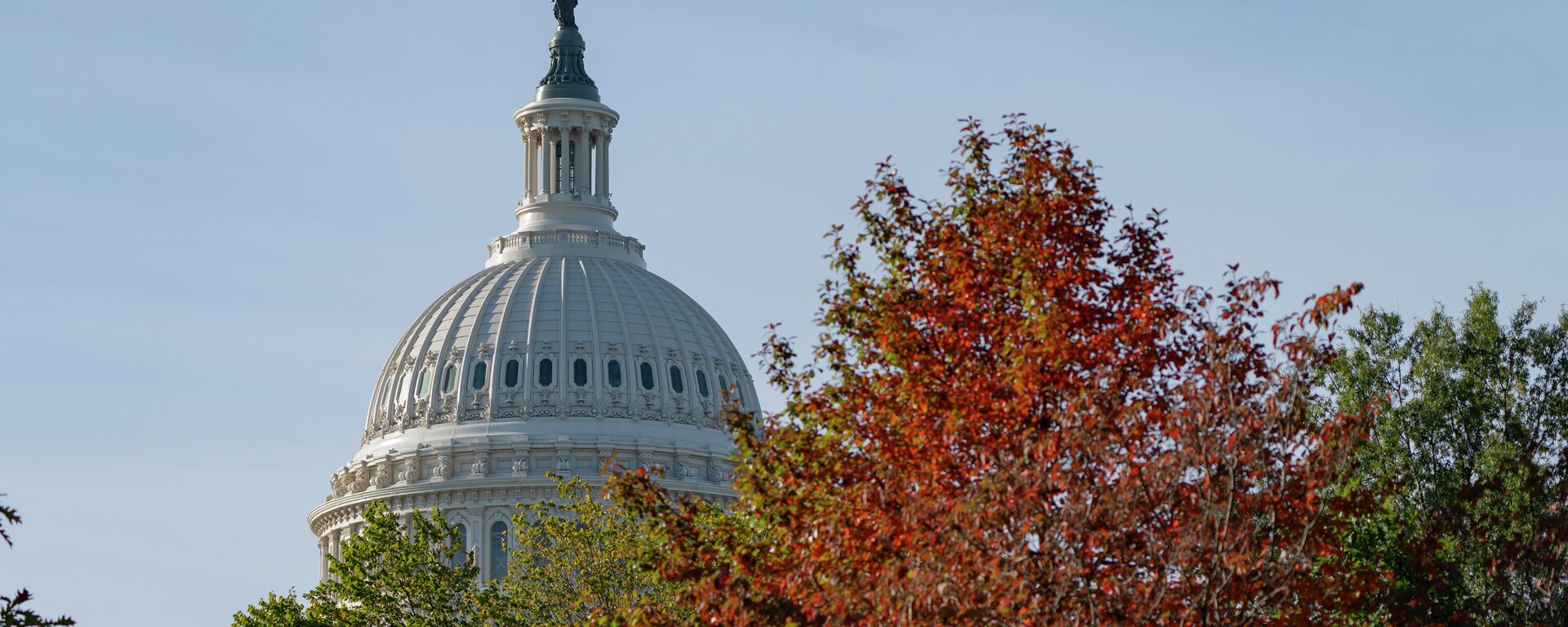https://sputnikglobe.com/20211201/higher-us-business-costs-pressure-led-to-upped-inflation-in-november---federal-reserve-1091185476.html
Higher US Business Costs Pressure Led to Upped Inflation in November - Federal Reserve
Higher US Business Costs Pressure Led to Upped Inflation in November - Federal Reserve
Sputnik International
WASHINGTON (Sputnik) - The US economy came under renewed pressure from supply chain disruptions, labor shortages and higher costs in November, forcing... 01.12.2021, Sputnik International
2021-12-01T23:12+0000
2021-12-01T23:12+0000
2022-08-06T13:36+0000
pandemic
federal reserve
us
inflation
https://cdn1.img.sputnikglobe.com/img/07e5/0b/18/1090987798_0:198:2939:1851_1920x0_80_0_0_ad544e42eb1ecec5fab9128f2bce7c85.jpg
"Economic activity grew at a modest to moderate pace in most Federal Reserve Districts during October and early November," the report, which is based on anecdotal information collected by the central bank’s 12 regional units, stated on Wednesday.Higher costs from supply disruptions and wage pressures "generally allowed firms to raise prices with little pushback” from the public, the report said.Labor shortages remained acute, driven by "ongoing pandemic concerns, child care and a reduced urgency to work due to fiscal support and accumulated savings," the report added.The Beige Book report came after Federal Reserve Chairman Jerome Powell told Congress on Wednesday that he expected the pace of US wage growth to subside going forth and inflation to cool as well while economic expansion remains steady.The US economy shrank by 3.5% for all of 2020 due to shutdowns and other disruptions caused by the coronavirus pandemic. Growth this year has been spotty, with an annualized 3.5% expansion in the first quarter, 3.6% in the second and 2% in the third.The Federal Reserve announced in March that it expected a 6.5% economic expansion for all of 2021 and has not changed its target despite the uneven growth in the past three quarters. The problem for the central bank though is inflation as wages and the prices of almost everything have soared from the lows of the pandemic due to supply chain disruptions.The Labor Department reported last month that the US Consumer Index, which represents a basket of products ranging from gasoline and health care to groceries and rents, rose 6.2% during the year to October. It was the fastest growth of the so-called CPI since November 1990, an acceleration driven mostly by pump prices of fuel running at seven-year highs.Powell said on Tuesday that the Federal Reserve might end its pandemic-era stimulus support for the US economy faster than anticipated due to high inflationary pressures and relatively strong growth.
https://sputnikglobe.com/20211130/best-way-to-fight-inflation-by-killing-democrats-massive-social-spending-bill-mcconnell-says-1091155971.html
Sputnik International
feedback@sputniknews.com
+74956456601
MIA „Rossiya Segodnya“
2021
Sputnik International
feedback@sputniknews.com
+74956456601
MIA „Rossiya Segodnya“
News
en_EN
Sputnik International
feedback@sputniknews.com
+74956456601
MIA „Rossiya Segodnya“
Sputnik International
feedback@sputniknews.com
+74956456601
MIA „Rossiya Segodnya“
pandemic, federal reserve, us, inflation
pandemic, federal reserve, us, inflation
Higher US Business Costs Pressure Led to Upped Inflation in November - Federal Reserve
23:12 GMT 01.12.2021 (Updated: 13:36 GMT 06.08.2022) WASHINGTON (Sputnik) - The US economy came under renewed pressure from supply chain disruptions, labor shortages and higher costs in November, forcing businesses to raise prices of goods and services that led to overall inflation, the Federal Reserve said in its Beige Book report.
"Economic activity grew at a modest to moderate pace in most Federal Reserve Districts during October and early November," the report, which is based on anecdotal information collected by the central bank’s 12 regional units, stated on Wednesday.
Higher costs from supply disruptions and wage pressures "generally allowed firms to raise prices with little pushback” from the public, the report said.
Labor shortages remained acute, driven by "ongoing pandemic concerns, child care and a reduced urgency to work due to fiscal support and accumulated savings," the report added.
The Beige Book report came after Federal Reserve Chairman Jerome Powell told Congress on Wednesday that he expected the pace of US wage growth to subside going forth and inflation to cool as well while economic expansion remains steady.

30 November 2021, 22:16 GMT
The US economy shrank by 3.5% for all of 2020 due to shutdowns and other disruptions caused by the coronavirus pandemic. Growth this year has been spotty, with an annualized 3.5% expansion in the first quarter, 3.6% in the second and 2% in the third.
The Federal Reserve announced in March that it expected a 6.5% economic expansion for all of 2021 and has not changed its target despite the uneven growth in the past three quarters. The problem for the central bank though is inflation as wages and the prices of almost everything have soared from the lows of the pandemic due to supply chain disruptions.
The Labor Department reported last month that the US Consumer Index, which represents a basket of products ranging from gasoline and health care to groceries and rents, rose 6.2% during the year to October. It was the fastest growth of the so-called CPI since November 1990, an acceleration driven mostly by pump prices of fuel running at seven-year highs.
Powell said on Tuesday that the Federal Reserve might end its pandemic-era stimulus support for the US economy faster than anticipated due to high inflationary pressures and relatively strong growth.


